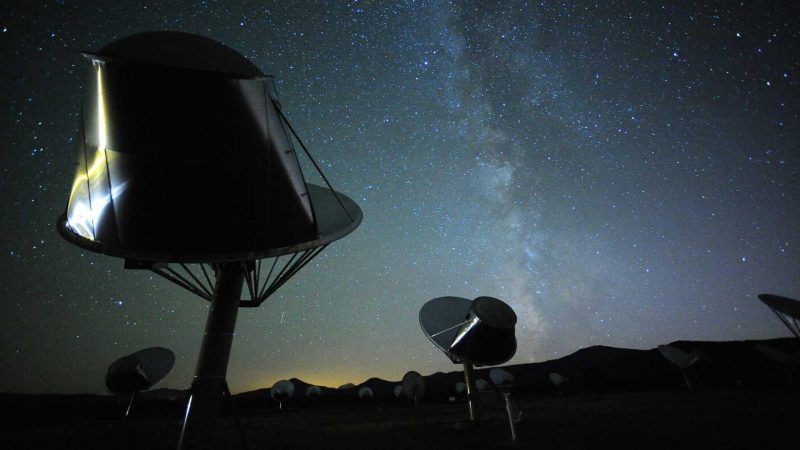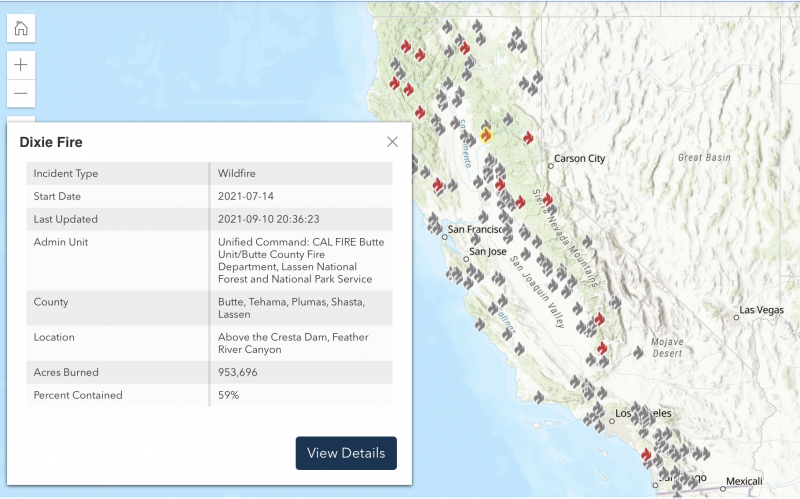
Wildfire threatens a SETI telescope
The SETI Institute said late Friday (September 10, 2021) that the Allen Telescope Array is being threatened by the large Dixie Fire in California. This radio telescope is the first to be designed specifically for the Search for Extraterrestrial Intelligence (SETI). On Friday afternoon, the fire was approximately 12 miles (19 km) south of the Array. Scientists and engineers normally on-site have been evacuated as a precautionary measure in response to an order from the Shasta County Sheriff’s Office. Inciweb said on Saturday morning (September 11) that this fire was 59% contained.
According to InciWeb, the Dixie Fire now covers just short of a million acres, or an area larger than the state of Rhode Island. It ranks as the second-largest fire in California history, just shy of last year’s August Complex fires.
The SETI Institute said:
According to Alex Pollak, the Array’s Science and Engineering Operations Manager, the fire’s slow northward march has provoked the need for evacuation. Anticipating the possibility that it might reach the antennas, the observatory staff contacted the U.S. Forest Service’s Fire Department to prepare the site against eventual damage. Two teams from the Forest Service, about a dozen people in total, removed brush from near the antennas. Trees in the area were pruned of any branches lower than 10 feet [about 2 meters] above the ground.
This isn’t the first time the Allen Telescope Array has been threatened by fire. In the summer of 2014, the so-called Eiler fire reached State Highway 89, approximately two miles from the antennas. The SETI Institute said:
The mom-and-pop Circle K restaurant, the only public dining facility in Hat Creek, met its end in that conflagration.
The still-spreading Dixie Fire is now only a few miles south of the Hat Creek Radio Observatory and the SETI Institute's Allen Radio Array. https://t.co/53UNWDD2il
— Sky Observer Anthony Cook (@AnthonyJCook2) September 10, 2021

Telescopes and wildfires
The SETI Institute explained:
It is an unfortunate fact that environments that are suitable for radio telescopes – including the Allen Telescope Array – are also frequently places where wildfires are commonplace. Since microwaves, the type of radio signals sought by the Array, are not hampered by Earth’s atmosphere, there’s no reason to place such instruments on mountain tops, as is done for optical telescopes.
But like their mirror-and-lens cousins, radio telescopes are generally located in rural areas. The signals sought by the Allen Array are presumed to be extremely faint, and radio quiet is a necessity. The Hat Creek Radio Observatory, where the Array is located, was established in 1959 and is now run by the SETI Institute. It was deliberately situated in a region of low population density. The surrounding landscape consists of pasture and forest land. On most days there are more cattle near the site than people.

Bottom line: Wildfire is threatening the Allen Telescope Array in California. This telescope was built specifically for SETI (the Search for Extraterrestrial Intelligence). Scientists and engineers have been evacuated from the site. The fire was 12 miles (19 km) away on Friday.











